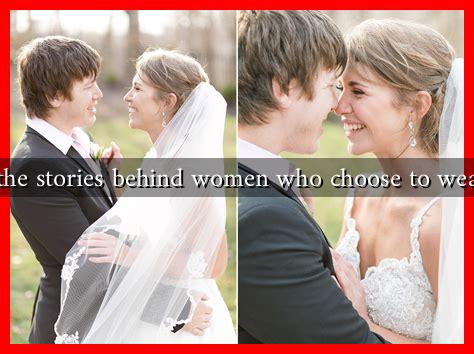-
Table of Contents
- What are the Stories Behind Women Who Choose to Wear the Veil?
- The Veil: A Symbol of Faith and Identity
- Personal Stories: Voices from Around the World
- Fatima: A Journey of Faith
- Amina: Embracing Cultural Heritage
- Leila: A Symbol of Resistance
- Statistics and Societal Perspectives
- Conclusion: Embracing Diversity in Choice
What are the Stories Behind Women Who Choose to Wear the Veil?
The veil, often associated with Islamic culture, is a complex symbol that carries various meanings for women around the world. While some view it as a sign of oppression, many women embrace it as a personal choice rooted in faith, identity, and empowerment. This article delves into the diverse stories behind women who choose to wear the veil, exploring their motivations, experiences, and the societal implications of their choices.
The Veil: A Symbol of Faith and Identity
For many women, wearing the veil is an expression of their religious beliefs. The hijab, niqab, and burqa are not merely garments; they represent a commitment to Islamic principles and a connection to their cultural heritage. Here are some reasons why women choose to wear the veil:
- Religious Obligation: Many Muslim women believe that wearing the veil is a commandment from God, as outlined in the Quran. This belief fosters a sense of spiritual fulfillment.
- Cultural Identity: In various cultures, the veil is a traditional garment that signifies belonging to a community. For women in countries like Afghanistan and Saudi Arabia, it is an integral part of their cultural identity.
- Personal Empowerment: Some women view the veil as a means of empowerment, allowing them to define their identity on their own terms rather than conforming to societal beauty standards.
Personal Stories: Voices from Around the World
To understand the diverse experiences of women who wear the veil, it is essential to listen to their stories. Here are a few compelling narratives:
Fatima: A Journey of Faith
Fatima, a 28-year-old woman from Egypt, shares her journey of wearing the hijab. She describes her decision as a deeply personal one, rooted in her desire to strengthen her relationship with God. “Wearing the hijab has brought me closer to my faith,” she explains. “It reminds me of my values and the importance of modesty.” Fatima also emphasizes that her choice has been met with both support and criticism, highlighting the societal pressures surrounding women’s clothing choices.
Amina: Embracing Cultural Heritage
Amina, a second-generation immigrant in France, wears the hijab as a way to connect with her Moroccan roots. “For me, the hijab is a celebration of my culture,” she states. “It’s a way to honor my family and the traditions that have shaped me.” Amina’s story illustrates how the veil can serve as a bridge between generations, fostering a sense of belonging and identity.
Leila: A Symbol of Resistance
In contrast, Leila, a young activist from Iran, views the veil as a symbol of resistance against oppressive regimes. “In my country, the hijab is mandatory, and many women are forced to wear it against their will,” she explains. Leila’s activism focuses on advocating for women’s rights and the freedom to choose how they express their identity. Her story highlights the complex dynamics of choice and coercion surrounding the veil.
Statistics and Societal Perspectives
Understanding the broader context of women who wear the veil requires examining statistics and societal attitudes:
- According to a 2017 Pew Research Center study, approximately 62% of Muslim women in the Middle East and North Africa wear the hijab.
- In Western countries, attitudes towards the veil vary significantly, with some viewing it as a symbol of oppression while others see it as a form of personal expression.
- In France, where the hijab is banned in public schools, debates continue over secularism and religious expression, reflecting the complexities of cultural integration.
Conclusion: Embracing Diversity in Choice
The stories of women who choose to wear the veil are as diverse as the women themselves. From expressions of faith and cultural identity to symbols of resistance, the veil carries multifaceted meanings. It is crucial to approach this topic with sensitivity and an understanding that each woman’s choice is deeply personal. As society continues to grapple with issues of identity, freedom, and expression, it is essential to listen to and respect the voices of women who wear the veil, recognizing their agency in defining their narratives.
For further reading on this topic, you can explore resources from organizations like Women’s Rights Advocacy that focus on women’s empowerment and rights across cultures.


